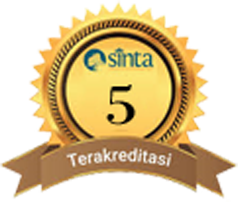PENINGKATAN KETUNTASAN BELAJAR SISWA MELALUI PENERAPAN MODEL MAKE A MATCH DALAM MATA PELAJARAN SEJARAH KEBUDAYAAN ISLAM PADA KELAS VII MTsN 2 ACEH BESAR
DOI:
https://doi.org/10.22373/fitrah.v3i2.1543Abstract
The problem of learning Islamic Cultural History (SKI) in class VII-3 MTsN 2 Aceh Besar found that teachers have not developed a lot of learning models in teaching, teachers use lecture methods, question and answer, discussions, have not used active learning models, so students are less involved and have facts. in learning. This learning condition causes students to be less active and creative in participating in lessons, when learning takes place, students sit more, listen, take notes and do practice questions. The author tries to apply a learning model that is considered suitable to activate students and will increase student learning mastery, namely the make a match model. The implementation of the make a match model is where students look for pairs of question cards that match the answers to the cards held by students. Based on the research that has been carried out, it can be said that the learning mastery of grade VII-3 MTsN 2 Aceh Besar students in SKI subjects increased from 65.62 (cycle I) to 87.50 (cycle II). Teacher activity increased from 90.71 (cycle I) to 93.05 (cycle II). Student activity also increased from 87.50 (cycle I) to 91.67 (cycle II). Thus there is an increase in student learning mastery through the application of the make a match model in SKI subjects in class VII-3 MTsN 2 Aceh Besar.
Downloads
Published
How to Cite
Issue
Section
License
Authors who publish in this journal agree to the following terms:
- Authors retain copyright and grant the journal right of first publication with the work simultaneously licensed Attribution-NonCommercial-ShareAlike 4.0 International (CC BY-NC-SA 4.0) that allows others to share the work with an acknowledgment of the work's authorship and initial publication in this journal.
- Authors can enter into separate, additional contractual arrangements for the non-exclusive distribution of the journal's published version of the work (e.g., post it to an institutional repository or publish it in a book), with an acknowledgment of its initial publication in this journal.
- Authors are permitted and encouraged to post their work online (e.g., in institutional repositories or on their website) before and during the submission process, as it can lead to productive exchanges and earlier and greater citation of published work. (See The Effect of Open Acces)









